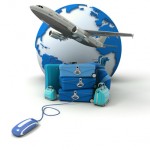
Information and communication technologies (ICT) have had tremendous impact virtually all industries and sectors, as well as, specific business businesses processes. The impact of ICT on businesses relate to the facilitation of communication with organisational stakeholders, serving as an effective sales channel, providing an effective platform for engaging in marketing and others. Literature review is a “systematic, explicit and reproducible method for identifying, evaluating and interpreting the existing body of recorded work produced by other scholars” (Khan, 2008, p.41). Importance of conducting literature review in this paper can be explained in a way that it allows to present the most notable data about various important aspects of ICT in tourism and hospitality so that this data can be referred to during the case study analysis. ICT in Tourism and Hospitality Sector Parsons and Oja (2013) mention online reservations systems as one of the greatest impacts of ICT on tourism and hospitality sector. Major travel companies such as Expedia, Orbitz, and Thomas Cook, as well as, medium and even small sized tourism and hospitality firms have online reservation functionalities on official company website. Online reservation capabilities provide substantial cost saving opportunities for businesses in tourism and hospitality sector that otherwise would have been spent on human resources making reservations in a manual manner. Moreover, according to Mihalic and Buhalis (2013), while the majority of businesses in tourism and hospitality sector have adopted various components of ICT to certain extent, there are substantial differences between businesses in terms of extent and nature of adoption of those components. In simple terms, Mihalic and Buhalis (2013) argue that some tourism and hospitality organisations have effectively included ICT to the sources of competitive advantage, whereas opportunities offered by ICT are yet to be used by others. Importance of ICT to Small Hospitality Companies…

Generally, two alternative approaches can be used for website evaluation: quantitative and qualitative. Quantitative approach, as the name suggests is closely associated with numbers and calculations such as the numbers of website visitors, visitor bounce rate, the numbers of countries the website is visited from etc. Qualitative approach, on the other hand, includes non-quantifiable criteria such as design, navigation, interactivity and others. Qualitative approach has been adopted for Tophams Hotel website evaluation, and accordingly, non-quantifiable elements have been selected as evaluation criteria. The rationale for the choice of qualitative approach relates to the fact that factors impacting website visits and visitor experiences are qualitative as well. This argument is supported by findings of the literature review provided above. The following table presents a set of website evaluation criteria selected to conduct Tophams Hotel website evaluation and briefly explains rationale for the choice of each criteria. Criteria Rationale for the choice of criteria First impression First impression has direct and significant impact on the visitor bounce rate on the website. Factors impacting first impression include download time of the website, design features and capabilities, presentation of credential validations etc. Navigation capabilities Nowadays website visitors expect advanced level of navigation capabilities and absence of navigation capabilities at this level is most likely to have negative implications on brand image. Quality of content Importance of usefulness and relevance of the content can not be disputed. The literature review found factors impacting content quality to include information being up-to-date, availability of the content in several languages, FAQs and others. Attractions Attractions are aimed at encouraging return visits to the website, and thus they play great role in achievement of website objectives. Ease of finding information This specific criterion can be marked as a critical success factor for any website and its importance is…
By John Dudovskiy
Category: E-Commerce

Distribution channels in tourism can be divided into two levels: national and international. In national level, domestic market is served by large tourism operators and retail travel agents. In international level, on the other hand, tourism distribution may involve tourism operators, retail travel agents, as well as, wholesalers. According to Moutinho (2011) tourism distribution channels involve supplier products to be public (consumers) through channels members. Mourinho specifies individual parties in each category in the following manner: Supplier products Channel members Public Transport Accommodation Insurance Entertainment Tours Specialised services Tour operators Travel agencies Cross suppliers Suppliers Other Individuals Groups Organisations Tourism services, distributors and target population Source: Moutinho (2011) Mohapatra (2013) also discusses various aspects of distribution channels in tourism presented in above, and observes an interesting tendency in relation to these channels. Namely, according to Mohapatra (2013), the share of online sales transactions through these channels have been consistently and rapidly increasing compared to the volume of offline sales transactions during the two decades. However, Mohapatra (2013) fails to refer to any official statistical data to back up this claim. References Mohapatra, S. (2013) “E-Commerce Strategy: Text and Cases” Springer Group Moutinho, L. (2011) “Strategic Management in Tourism” CABI

Brands operating ecotourism services can be divided into two categories: brands offering ecotourism services as the only type of service and brands that offer ecotourism along with alternative types of tourism. Communication and branding are critical success factors for new product development. However, communication and branding efforts directed towards ecotourism can be vastly different compared to communication and branding efforts associated with many other products and services due to a set of unique aspects of ecotourism. Usually, ecotourism brands position their services as nature related tourism. Major ecotourism brands aim to target their customer segment though communicating their marketing message via various channels. Generally, profile of ecotourists in Europe can be described as middle-age to elderly experienced travellers who are opinion leaders with high education and within higher income bracket (Global Ecotourism Factsheet, 2006). Major ecotourism tour operators in the UK targeting this customers segment include Travel Corporation, Thomas Cook Group plc, TUI Travel plc, Acromas Holidays ltd, Trailfinders Ltd, Holidaybreak Ltd, Portman Travel Ltd and others. The most popular ecotourism destinations include Annapurna area in Nepal, Mayan sites in Belize, Galapagos Islands, Kenya, Australia, Peru, Brazil, South Africa and others. Competition in Ecotourism Competition in ecotourism is intense with tour operators if various sizes competing with each-other. According to the World Tourism Organisation (WTO) the number of international tourist arrivals exceeded one billion in 2012, and it is forecasted to reach 1.8 billion mark by the year of 2030. Company name Number of outlets % share of outlets Thomas Cook 777 19.0 CGL 360 8.8 Midlands 102 2.5 TUI 866 21.2 Flight Centre 90 2.2 Bath Travel 65 1.6 STA Travel 51 1.2 Hays Travel 44 1.1 CGL managed services and franchises 40 1.0 Other ABTA outlets 1385 33.9 Non-ABTA outlets 267 6.5 Travel agencies in the UK…

Generally, design can be defined as “realisation of a concept or idea into a configuration, drawing, model, mould, pattern, plan or specification (on which the actual or commercial production of an item is based) and which helps achieve the item’s designated objectives” (Business Dictionary, 2014, online). Design of products and services is a separate science in marketing to be approached in a serous and responsible manner. Design process for new products and services involve the stages of initial research, concept formulation, initial design, development, construction of a prototype, engineering, and production. However, the extent of applicability of design process described above is highly limited towards ecotourism primarily due to the fact that it is highly difficult to develop new ecotourism destinations from the scratch. Accordingly, the key features of design elements of ecotourism are vastly different from the key features of design elements of the majority of products and services. Key features of ecotourism design elements can be specified as genuineness of nature environment, specific wildlife, pure ecosystem with accessible interpretation trails, level of excitement of its nature phenomenon, ecolodge, cultural immersion of local people, and historical heritage. The level of relevance of these key features to customer needs is discussed in the following part of the report. Ecotourism Design Elements and Customer Needs The following table illustrates the relevance of ecotourism design elements to customer needs: Key features of ecotourism design Discussions Genuineness of natural environment Ecotourists have high levels of interest in genuine nature places such as forests, national parks, marines, etc. Specific wildlife Higher levels of wildlife such as animals living in a free habitat have serve as effective attraction for ecotourists Ecosystem Ecosystems can be explained as self-sustaining communities within natural settings (Schmitz, 2007) and they represent a major point of interest for ecotourists Ecolodge…
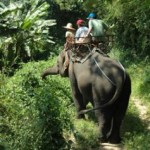
Tourism is one of the largest industries in the global scale and its increasing popularity has resulted in emergence of independent forms of tourism such as leisure tourism, business tourism, sports tourism, medical tourism, ecotourism, food tourism, religious tourism etc. Ecotourism can be defined as “tourism to places that is designed to the protection of the environment or at least minimise damage to it, often involving travel to areas of natural interest in developing countries or participation in environmental projects” (Dictionary Reference, 2014, online). Ecotourism is also known as ethical tourism, ecological tourism and nature-based tourism. Main differences of ecotourism from traditional tourism relate to travels only to natural destinations, constructions of environmental awareness, reducing detrimental impacts of tourism to the local communities and the environment, and respect for local cultures. Benefits of Ecotourism Understanding differences between customer needs and wants in an appropriate manner is important in order to fully appreciate the benefits of ecotourism to customers. Needs are essential for people for physical and social survival and they include food and water, clothing, accommodation, security, communication, love etc. Wants, on the other hand, can be explained as “the cultural manifestation of those needs” (Andrews, 2007, p.72). In simple terms, both, highly educated individuals with substantial income and floor-level factory employees with minimal income have a need for adventure and recreation. However, while highly educated individuals with substantial income might want to satisfy this need by engaging in ecotourism, floor-level factory employees with minimal income might want to satisfy the need for adventure and recreation by only attending a local park. There are various benefits of ecotourism to individuals engaged in ecotourism, to host destinations of ecotourism, and to the society and environment in general. Ecotourism offers a set of advantages to customers, i.e. individuals engaged in ecotourism…
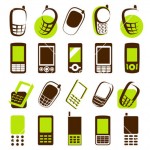
Design can be explained as the process of giving something a deliberate aesthetic form. Design of mobile phones is one of its primary success factors. Key features of a mobile phone design elements may relate to physical design of the handset, user input, mobile context, usability of the devise, design of content and others. Portability marks one of the most important features of design elements of mobile phones. Finding an effective balance between portability and usability is one of the most challenging tasks for modern mobile handset designers. On one hand, customers expect conveniently usable keyboards and wide screen sizes from modern mobile phones so that the device can be used with no or minimum strain eyes. On the other hand, designing large keyboards and enlarging screen sizes in a mobile phone can only be achieved by enlarging the physical size of the devise with negative implications on its portability. Therefore, designers of mobile phones need to find an effective balance between usability and portability. Generally, The design process of a mobile phone may include the following stages: 1. Design brief. This initial stage in mobile phone design process involves the formulation of initial ideas for the design. Initial ideas for the design may be obtained from customer feedback of the previous models or changes in the marketplace associated with innovation or breakthrough. 2. Product design specifications stage relates to the market research and analysis of the problem. During this stage data related to customer needs and wants in relation to mobile phone designs are going to be collected and analysed. 3. Concept design is a stage in design process where outlines of key features of the design are developed. For a mobile phone concept design may include specification of the size of the screen, size and form of buttons,…
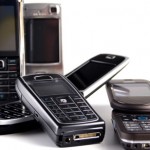
The primary, traditional benefit of mobile phones can be specified as being able to engage in conversation with other people. However, benefits offered by mobile phones have been extended mainly during the past two decades to include communication through texting, recreation through games, taking pictures and videos, browsing internet etc. The primary benefits of mobile phones that relates to serving as a communication platform, has traditionally facilitated the communication through phone calls and text messaging. However, thanks to the internet browsing capabilities in modern mobile phones, communication can also be facilitated through e-mails, chats and video calls. Increasing levels of capabilities of advanced mobile phones in terms of taking pictures and videos are causing mobile phones to impose direct competitions to manufacturers of cameras and camcorders. This fact can be pointed to as another substantial benefit of mobile phones. Moreover, internet browsing capabilities of mobile phones have substantially increased the range of their benefits to offer the possibilities of shopping, reading news, listening to music and watching films online, working with spreadsheets, and even serving as a wallet to purchase products and services offline. To summarise the point, mobile phones have become an integral part of daily life for most people to such as extent that they cannot imagine their life without this product. Mobile Phone Value to Customers Value proposition of mobile phones to customers are significant and this value is associated with serving as an effective communication tool through several mediums such as phone calls, text messages, e-mails and video calls, recreation, making purchases, working etc. It is important for mobile phone manufacturers to be able to distinguish between customer wants and needs in order to be able to achieve long-term growth. Customer need is associated with specific functional or emotional benefit or the product that customer…
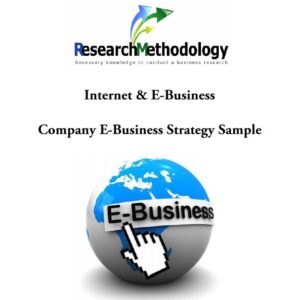
This report has been written for Managing Director of a business organisation and the report illustrates company e-business strategy sample. The report has been written because although the current website of the company has some e-commerce facilities its contribution to the level of revenues is significantly below from its full potential. The report discusses specific elements and issues of e-business strategy such as intranets and extranets, security and legal issues facing an online business organisation, and role of search engine in e-business strategy. Moreover, the report contains explanations of potential impact of a well-designed website on an e-business entity. The 21st century is being rightly classified as the age of information and Internet and innovations in information technology (IT) play increasingly great role in processional and even personal lives of many people. Moreover, internet offers unprecedented opportunities for business organizations. 1. Introduction 1 2. The role of intranets and extranets in business communication 1 3. Security and legal issues facing an online business organisation 2 4. Role of search engines in e-business strategy 3 5. Impact of well-designed website on an e-business 4 6. Conclusions 6 References 8 Amazon Bing Facebook Google Next Tesco Twitter Yahoo How do I receive the report? Once payment is made you will receive a link to you e-mail you have registered with on Pay Pal or the e-email you have entered when specifying bank details to download the report. The report is downloaded in PDF format. The link will stay active for 7 days. How can I use the report to complete my academic assignment/research? Reports and essays offered by research-methodology.net are professionally written samples in their respective areas. Reports and essays are intended to be used as guides and sources of secondary data for reference purposes. I did not receive the link/I can…

Personal Development Plan (PDP) “is a document completed by an individual that details their intentions and actions with regard to their own development” (Cunningham et al., 2004, p.129). My personal development plan associated with the achievement of my career goals is represented in the following table: Plan Actions Time/Deadline Increasing the level of cross-cultural awareness Attending cross-cultural awareness training session December 2014 Learning from real-life special events Attending special events of various types and critically analysing the effectiveness of organisation and management Every month until June 2016 To remain updated with the latest trends and news in events industry To subscribe to “Special Events” magazine and to be reading each issue Every month To be increasing the level of knowledge about theoretical aspects of event management Reading relevant academic literature Every month To be improving personal leadership skills Attending ‘Essentials of Leadership’ 5-day program offered by London Business School July 2014 To be enhancing the level of personal creativity Attending ‘Creativity and Innovation’ 2-day course offered by Impact Factory September 2014 To be improving personal time management skills Attending ‘Time Management’ 1-day training course offered by Activia Training November 2014 To find a personal coach among accomplished event managers Studying the personalities of successful event managers, and initiating a contact with a highly experienced event manager January 2015 It is important to note that personal development needs to be perceived as a continuous process throughout the whole duration of career rather than being accepted as a one-time or occasional initiative. Accordingly, all aspects of personal development plan provided in table above such as increasing the level of cross-cultural awareness, learning from real-life special events, remaining updated with the latest trends and news in events industry, and to be improving personal leadership skills are going to be invested in for the…
